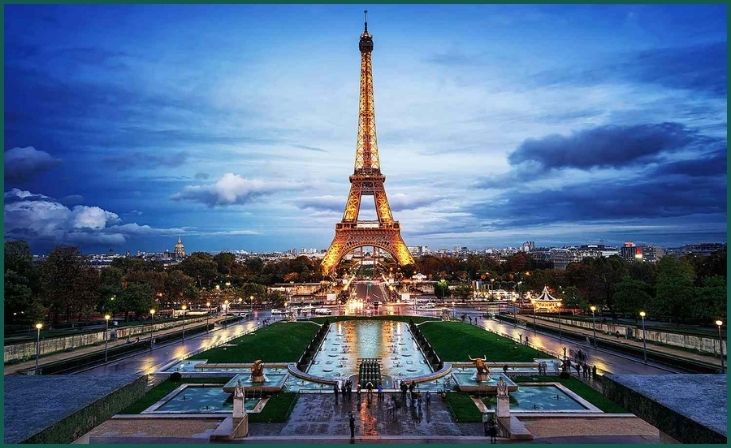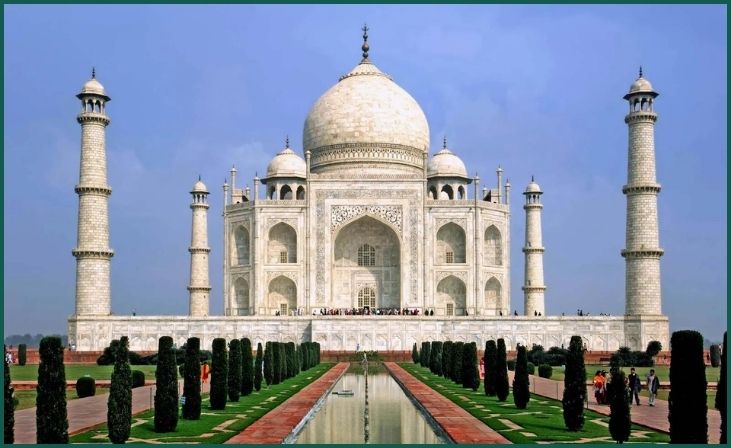In the annals of human history, certain architectural marvels have transcended mere structures to become symbols of civilization, testaments to human ingenuity, and beacons of cultural identity. From the towering majesty of the Eiffel Tower to the serene grandeur of the Taj Mahal, these beloved landmarks have captured the imaginations of people across the globe for generations. Yet, as time marches on and the world evolves, these iconic monuments inevitably transform, both subtle and profound.
In this blog, “The World’s Most Beloved Landmarks, Then and Now,” we embark on a journey through time to explore the evolution of these treasured landmarks. Through captivating narratives and striking imagery, we delve into the rich history, architectural significance, and enduring legacy of each landmark. From their humble beginnings to their present-day stature as cultural icons, we witness how these landmarks have withstood the passage of time, bearing witness to the triumphs and tribulations of humanity. Join us as we uncover the stories behind these timeless treasures and celebrate their enduring allure in the modern world.
Table of Contents
ToggleWorld’s Most Beloved Landmarks
Eiffel Tower, Paris

The Eiffel Tower, an architectural masterpiece originally erected as the entrance arch for the 1889 World’s Fair, has transcended its utilitarian beginnings to become an enduring symbol of Parisian elegance and innovation. Rising majestically above the city skyline, it stands as a testament to French artistry and engineering brilliance. Over the years, the Eiffel Tower has evolved into a global icon, attracting millions of visitors annually who come to marvel at its towering structure and breathtaking panoramic views of the city.
Beyond its role as a tourist attraction, the Eiffel Tower has woven itself into the fabric of Parisian culture, serving as a backdrop for countless romantic gestures, cultural celebrations, and iconic photographs. Today, it stands as a timeless emblem of the City of Light, embodying the spirit of creativity, ingenuity, and joie de vivre that defines the French capital.
Also Read- 7 Most Affordable Places To Retire Abroad
Great Wall of China
Stretching across the vast expanse of northern China, the Great Wall stands as a testament to the ingenuity and perseverance of ancient civilizations. Originally constructed to protect against invasions from nomadic tribes, this awe-inspiring feat of engineering has since become a symbol of China’s rich cultural heritage and historical legacy. As one of the most ambitious building projects in human history, the Great Wall continues to captivate visitors with its sheer scale and breathtaking vistas.
From the rugged mountain passes of the west to the rolling hills of the east, each section of the wall offers a glimpse into China’s storied past and the remarkable achievements of its builders. Today, as a UNESCO World Heritage Site, the Great Wall stands as a lasting monument to the resilience and determination of the Chinese people, inspiring awe and admiration in all who behold it.
The Colosseum, Rome
As one of the most iconic symbols of ancient Rome, the Colosseum stands as a testament to the grandeur and sophistication of Roman engineering and architecture. Originally built as a venue for gladiatorial contests and public spectacles, this majestic amphitheater has witnessed centuries of history unfold within its walls. Today, visitors from around the world flock to Rome to marvel at the Colosseum’s awe-inspiring structure and learn about its fascinating past.
Despite centuries of wear and tear, the Colosseum remains a symbol of Rome’s enduring legacy and cultural significance, serving as a poignant reminder of the city’s rich history and the ingenuity of its ancient inhabitants.
Taj Mahal, India

Commissioned by the Mughal emperor Shah Jahan as a mausoleum for his beloved wife Mumtaz Mahal, the Taj Mahal stands as a timeless symbol of love and devotion. Constructed from gleaming white marble and adorned with intricate carvings and precious gemstones, this architectural masterpiece is widely regarded as one of the most beautiful buildings in the world. Today, the Taj Mahal continues to captivate visitors with its ethereal beauty and profound symbolism, drawing millions of admirers from across the globe.
Don't just scroll, subscribe!
BuzzTrail's unique web-stories are the cure for boredom you've been waiting for.
As a UNESCO World Heritage Site, it stands as a testament to India’s rich cultural heritage and the enduring power of love to inspire and uplift the human spirit.
Pyramids of Giza, Egypt
Rising majestically from the desert sands of Egypt, the Pyramids of Giza stand as enduring symbols of the ancient Egyptian civilization. Built as elaborate tombs for the pharaohs, these monumental structures continue to intrigue and mystify visitors with their sheer size and architectural precision. Despite millennia of existence, the Pyramids remain marvels of engineering and craftsmanship, offering a window into the grandeur and sophistication of ancient Egyptian society.
Today, as one of the Seven Wonders of the Ancient World and a UNESCO World Heritage Site, the Pyramids of Giza stand as a testament to the ingenuity and creativity of the human spirit, inspiring wonder and awe in all who behold them.
Statue of Liberty, New York
Standing tall and proud in New York Harbor, the Statue of Liberty has come to symbolize freedom, democracy, and the American dream. A gift from the people of France to the United States, this iconic monument has welcomed generations of immigrants to the shores of America, serving as a beacon of hope and opportunity for millions around the world.
Today, the Statue of Liberty remains one of the most recognizable landmarks in the world, drawing visitors from far and wide who come to pay homage to its enduring legacy and the values it represents. As a symbol of liberty and democracy, the Statue of Liberty stands as a testament to the enduring power of freedom to inspire and uplift the human spirit.
Petra, Jordan

Nestled amid the rugged desert landscape of Jordan, the ancient city of Petra stands as a testament to the ingenuity and creativity of its Nabatean builders. Carved into the rose-red cliffs of the Wadi Musa valley, this UNESCO World Heritage Site is renowned for its stunning rock-cut architecture and archaeological significance. From the majestic Treasury to the intricately carved facades of the Royal Tombs, each structure offers a glimpse into the rich history and cultural heritage of Petra.
Today, visitors from around the world flock to Jordan to marvel at the beauty and grandeur of this ancient city, exploring its labyrinthine passageways and hidden treasures. As one of the most iconic landmarks in the Middle East, Petra continues to inspire wonder and awe in all who venture within its hallowed walls.
For More- 7 Best Places To Visit In Hawaii For An Unforgettable Trip
Conclusion
As we reflect on the journey through “The World’s Most Beloved Landmarks, Then and Now,” it becomes evident that these iconic structures have not only stood the test of time but have also evolved to embody the essence of human achievement and cultural significance. From the enduring majesty of the Great Wall of China to the timeless beauty of the Taj Mahal, each landmark tells a story of ingenuity, resilience, and the enduring spirit of humanity. Despite the passage of centuries, these monuments continue to inspire awe and wonder in all who behold them, serving as timeless symbols of our shared heritage and collective aspirations. As we look to the future, may these beloved landmarks serve as reminders of the power of human creativity and the enduring legacy of our civilization.
FAQs
What makes these landmarks so beloved?
What makes these landmarks so beloved?
These landmarks are beloved for their architectural beauty, historical significance, and cultural importance. They symbolize human achievement, ingenuity, and the enduring legacy of civilizations.
How have these landmarks changed over time?
How have these landmarks changed over time?
While many of these landmarks have remained structurally intact, they have undergone changes such as restoration efforts, renovations, and adaptations to modern use. Some have also faced challenges such as environmental degradation and natural disasters.

